#12 in Vietnam
Bánh Cuốn: Basic Information
Pronunciation
Alternative Name(s)
Dish Type
Course
Mealtime
Popular Bánh Cuốn Variations

Bánh Cuốn Thanh Trì

Bánh Cuốn Hà Nội
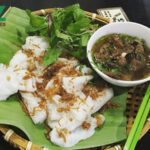
Bánh Cuốn Lạng Sơn
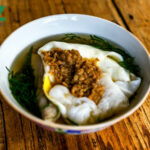
Bánh Cuốn Cao Bằng

Bánh Cuốn Hải Phòng
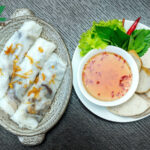
Bánh Cuốn Hải Dương
Bánh Cuốn: Ingredients and Preparation
Main Ingredients
Main Cooking Method
Preparation Process
Bánh Cuốn: A Deep Dive
Cultural Significance
Taste
Texture
Aroma
Color
Serving Style
Serving Temperature
Accompaniment
Occasions
Seasons
Special Diets
Calories
Popularity
Popular Similar Dishes
- Gỏi Cuốn
- Phở Cuốn
- Bánh Gật Gù
- Rice Noodle Roll
Popular Dining Area
Bánh cuốn, literally “rolled cake,” is a traditional Vietnamese dish in the form of a thin, wide sheet made from rice flour (rice roll). It is cooked by steaming on a cloth stretched over boiling water.
A bánh cuốn sheet is rolled around a filling of various savory ingredients, but unfilled bánh cuốn (called bánh ướt) is also popular.
There are many suitable ingredients to make the filling of bánh cuốn. The most common option is a seasoned mix of ground shrimp, ground pork, and minced wood ear mushrooms.
Locals usually serve bánh cuốn with dipping sauces, chả lụa (boiled pork sausage), fried shallots or onions, fragrant herbs, and vegetables.
The most popular dipping sauce is usually a sweet and sour sauce made from Vietnamese fish sauce, garlic, chili peppers, and lime juice.
Bánh cuốn dates back to the Ly dynasty (1009–1225) and was mentioned as an offering for the Cold Food Festival.
Back then, bánh cuốn was also known as bánh xuân or bánh xuân thái. Today, this Vietnamese dish is a common dish, snack, and street food for all meals of the day.
Continue reading for more information about bánh cuốn, such as its numerous varieties, advantages, and disadvantages. I will also cover commonly asked questions and suggest similar dishes.
Key Points
Bánh Cuốn Images
What Are Popular Variations of Bánh Cuốn?
Below are the 13 most popular types of bánh cuốn in Vietnam.

Bánh Cuốn Thanh Trì
Style of bánh cuốn in Thanh Tri ward, HanoiAmong the most famous bánh cuốn varieties in VietnamFeatures paper-thin rice rollsHas no fillingServed with a special sauce and coriander, chả lụa, chả quế (cinnamon pork pâté), roasted peanuts
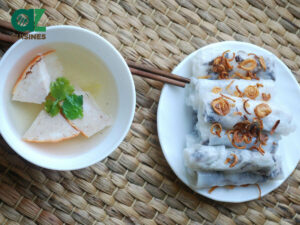
Bánh Cuốn Hà Nội
Style of bánh cuốn in HanoiFeatures rice rolls with a very smooth textureServed with shrimp paste, chả lụa, fragrant herbs, and Vietnamese dipping sauce
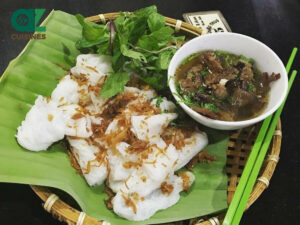
Bánh Cuốn Lạng Sơn
Style of bánh cuốn in Lang Son province, Northern VietnamFilled with eggs and braised pork shredded into thin strandsUsually enjoyed with pork brothServed by dipping the rice rolls in the pork broth

Bánh Cuốn Cao Bằng
Style of bánh cuốn in Cao Bang province, Northern VietnamFilled with eggsUsually enjoyed with pork broth flavored with pickled bamboo shoots and mắc mật (a local plant known scientifically as Clausena indica)Served by dipping the rice rolls in the pork broth

Bánh Cuốn Hải Phòng
Style of bánh cuốn in Hai Phong city, Northern VietnamFeatures rice rolls with a more pronounced aroma and a more pliable textureServed with a sauce made from pork bone broth

Bánh Cuốn Hải Dương
Style of bánh cuốn in Hai Duong province, Northern VietnamFeatures very thin rice rollsCan come with or without fillingsEaten with handsServed with a sauce made from local fish sauce, pork bone broth, black pepper, chili peppers, vinegar, and kumquat juiceEnjoyed with chả quế and shallots fried in pork fat
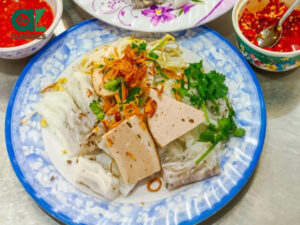
Bánh Cuốn Làng Kênh
Style of bánh cuốn in Kenh village, Nam Dinh province, Northern VietnamFeatures rice rolls with a very smooth texture made from local riceHas no fillingEnjoyed with chả quế and a specifically prepared dipping sauce
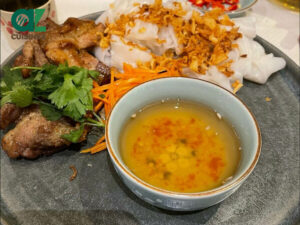
Bánh Cuốn Phủ Lý
Style of bánh cuốn in Phu Ly city, Ha Nam province, Northern VietnamFeatures thicker and harder rice rolls than other bánh cuốn varietiesHas no fillingsTypically served with grilled pork

Bánh Cuốn Mễ Sở
Style of bánh cuốn in Me So ward, Hung Yen province, Northern VietnamFeatures highly supple rice rolls made from local riceIncludes less fatty ingredients than other bánh cuốn varietiesEaten with hands
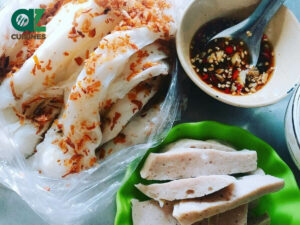
Bánh Mướt Nghệ An
Style of bánh cuốn in Nghe An province, Central VietnamAlso known as bánh mướtHas no fillingsServed with water mimosa salad or stews made from offal, eels, beef, poultry, etc.
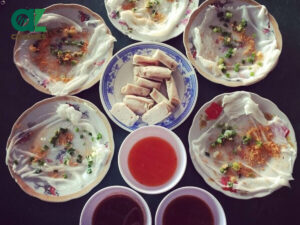
Bánh Ướt Diên Khánh
Style of bánh cuốn in Dien Khanh district, Khanh Hoa province, Central VietnamMore simple than other bán cuốn varieties in terms of ingredientsHas no fillingsUsually served hot

Bánh Cuốn Sài Gòn
Style of bánh cuốn in Ho Chi Minh CityFeatures a sweeter dipping sauce than other bánh cuốn varietiesCan be served with lettuce, bean sprouts, spring rolls, shrimp cakes, etc.
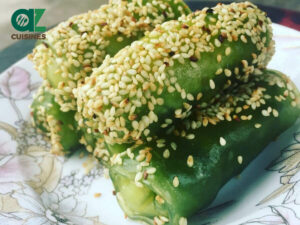
Bánh Cuốn Ngọt
Style of bánh cuốn in the Mekong Delta, Southern VietnamSweet type of bánh cuốn for dessertsCan have various colorsFeatures coconut milk in the rice batterFilled with sweet ingredients like mung beans, taro, shredded coconut, etc.Garnished with sesame seeds
After giving you a tour of different bánh cuốn variations, I will guide you to the strengths and weaknesses of bánh cuốn.
Pros and Cons of Eating Bánh Cuốn
Bánh cuốn comes with the following positive and negative attributes.
Pros
Cons
At this point, you may find bánh cuốn similar to cheung fun (Chinese noodle rice roll). These two dishes have many things in common but display many differences at the same time.
Bánh Cuốn vs Cheung Fun: What Are the Differences?
Bánh cuốn stands out from cheung fun (rice noodle rolls) in these 5 aspects: origin, batter ingredients, filling ingredients, texture, and accompaniments.
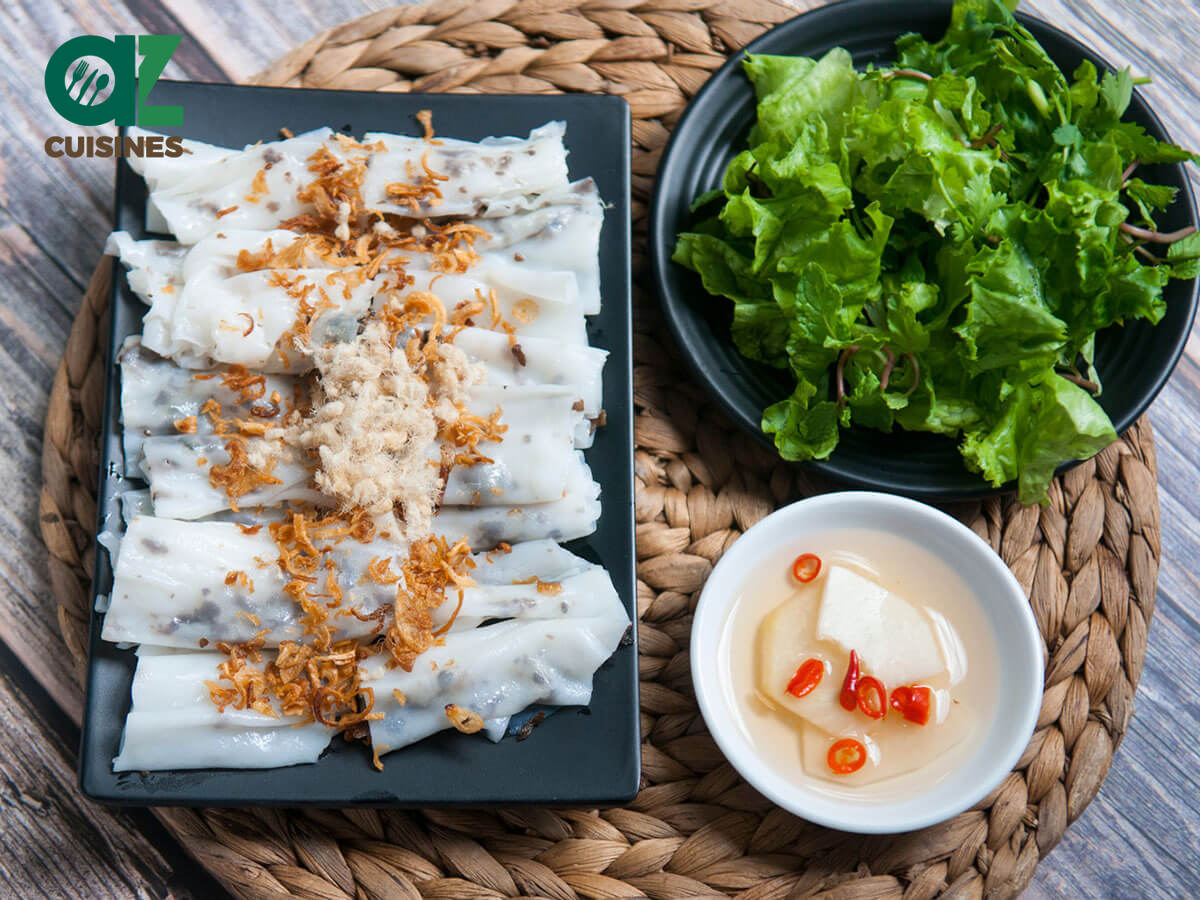
Bánh Cuốn
Origin: Vietnam
Batter Ingredients: Rice flour
Filling Ingredients: Shrimp, pork, wood ear mushrooms
Texture: Soft, smooth, delicate
Accompaniments: Vietnamese dipping sauce, fried shallots, chả lụa, vegetables
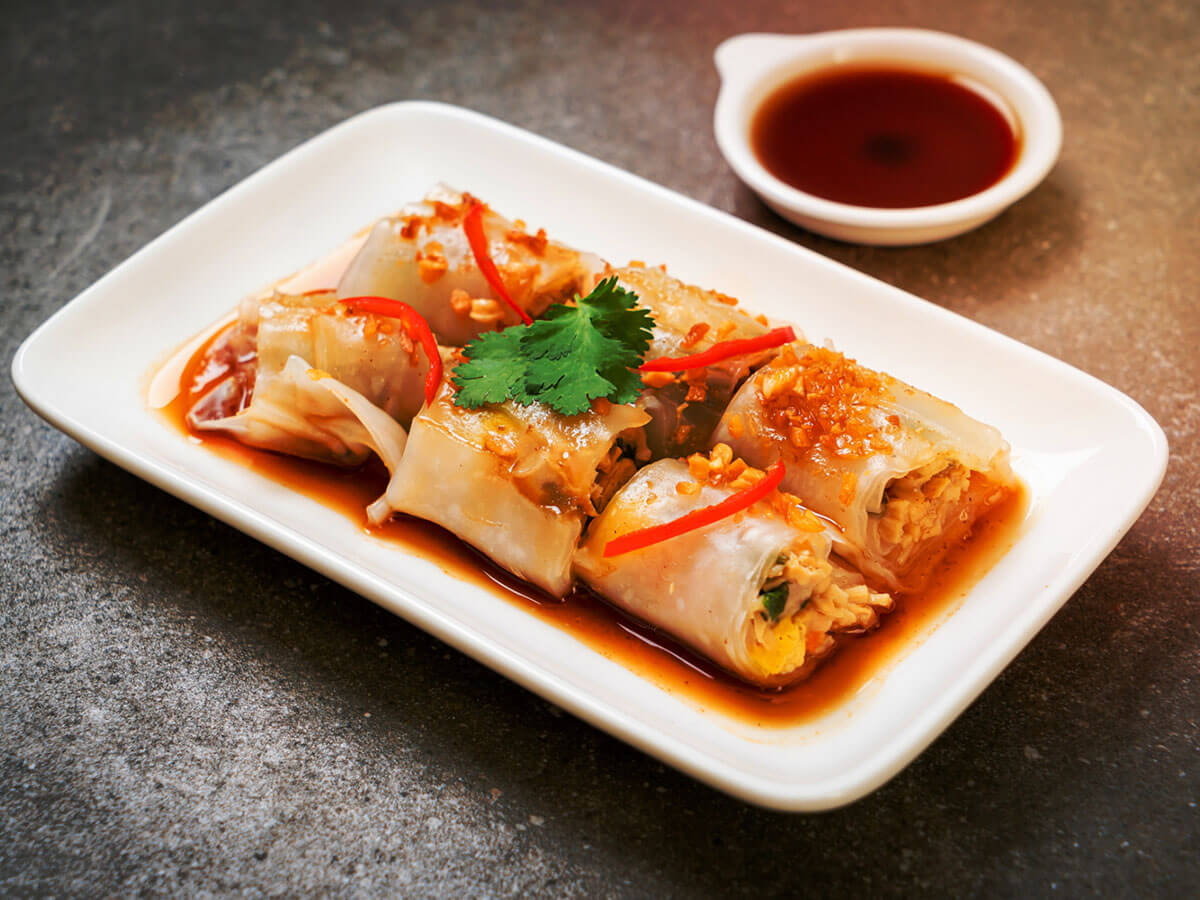
Cheung Fun (Rice Noodle Rolls)
Origin: China
Batter Ingredients: Rice flour or glutinous rice flour and tapioca flour
Filling Ingredients: Shrimp, beef, char siu (Cantonese-style BBQ pork), vegetables
Texture: Softer and chewier than bánh cuốn
Accompaniments: Served on its own or with soy sauce
Now that you know about how bánh cuốn is different from its similar dish in Chinese cuisine, explore other interesting facts about bánh cuốn in the FAQs section.




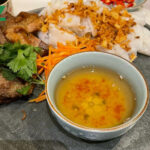

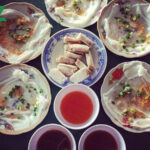

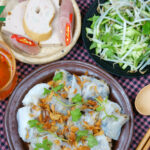
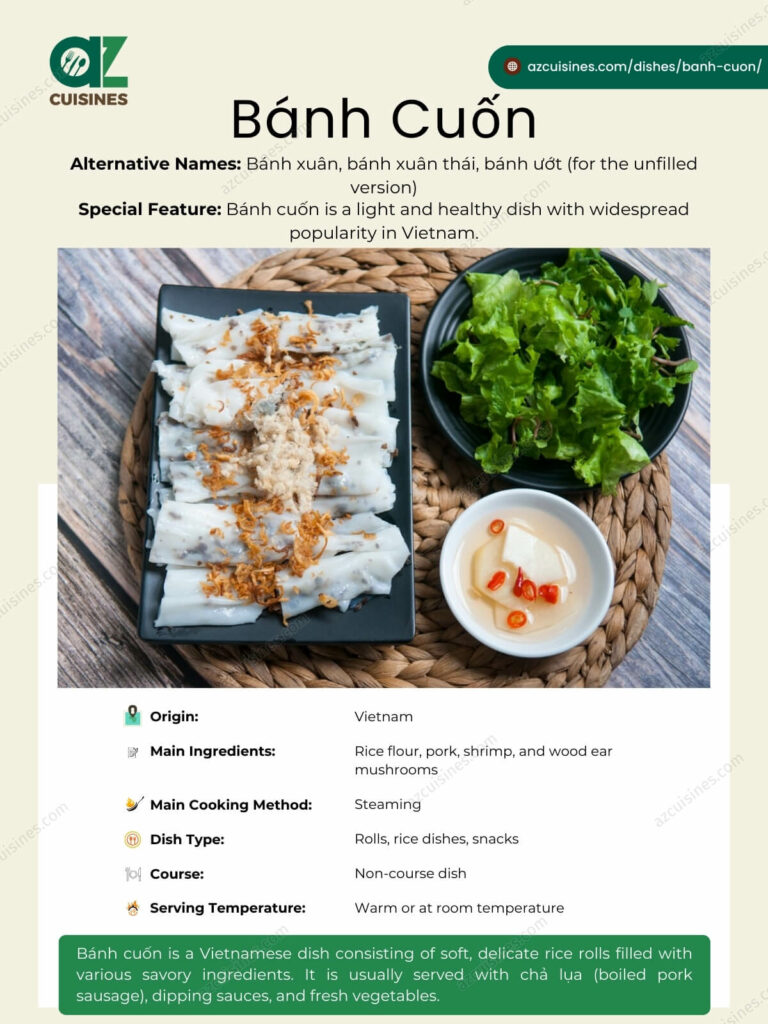
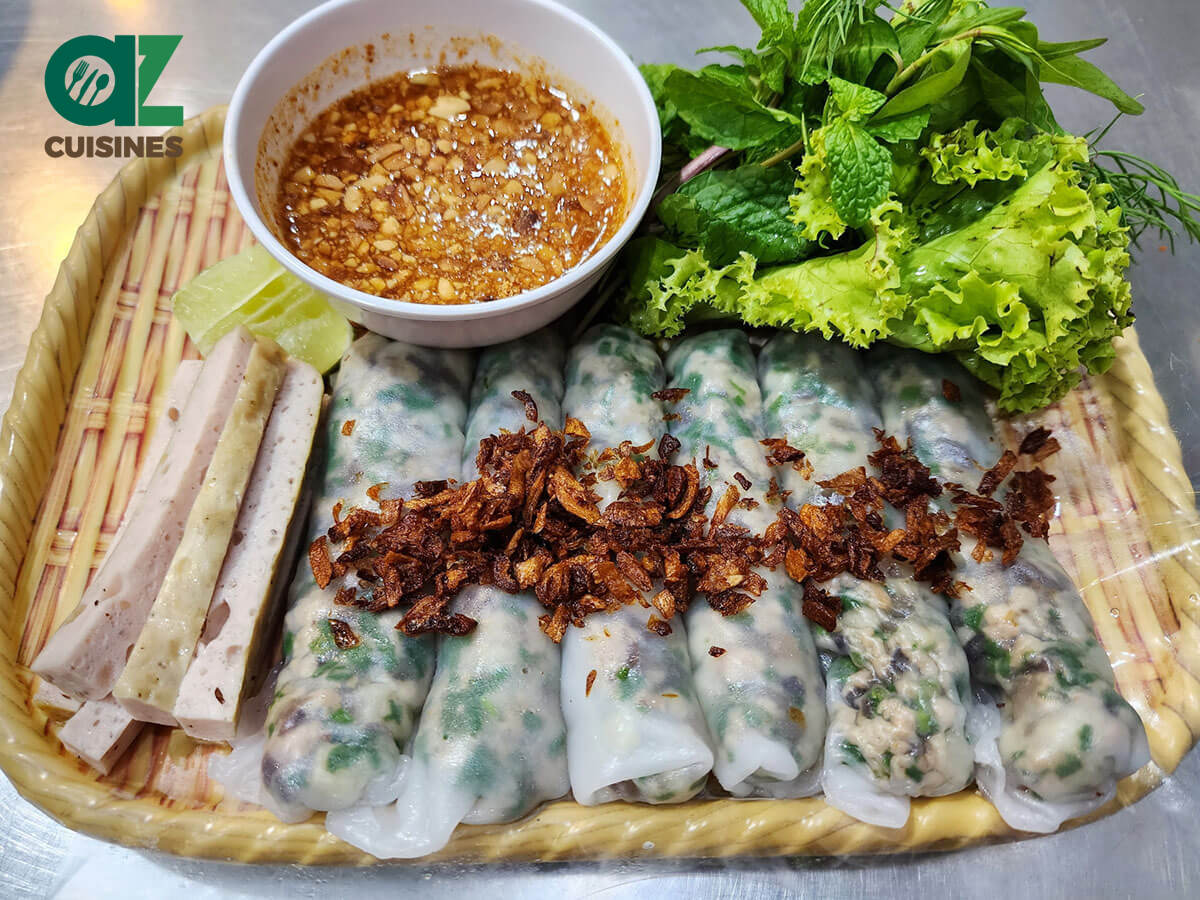



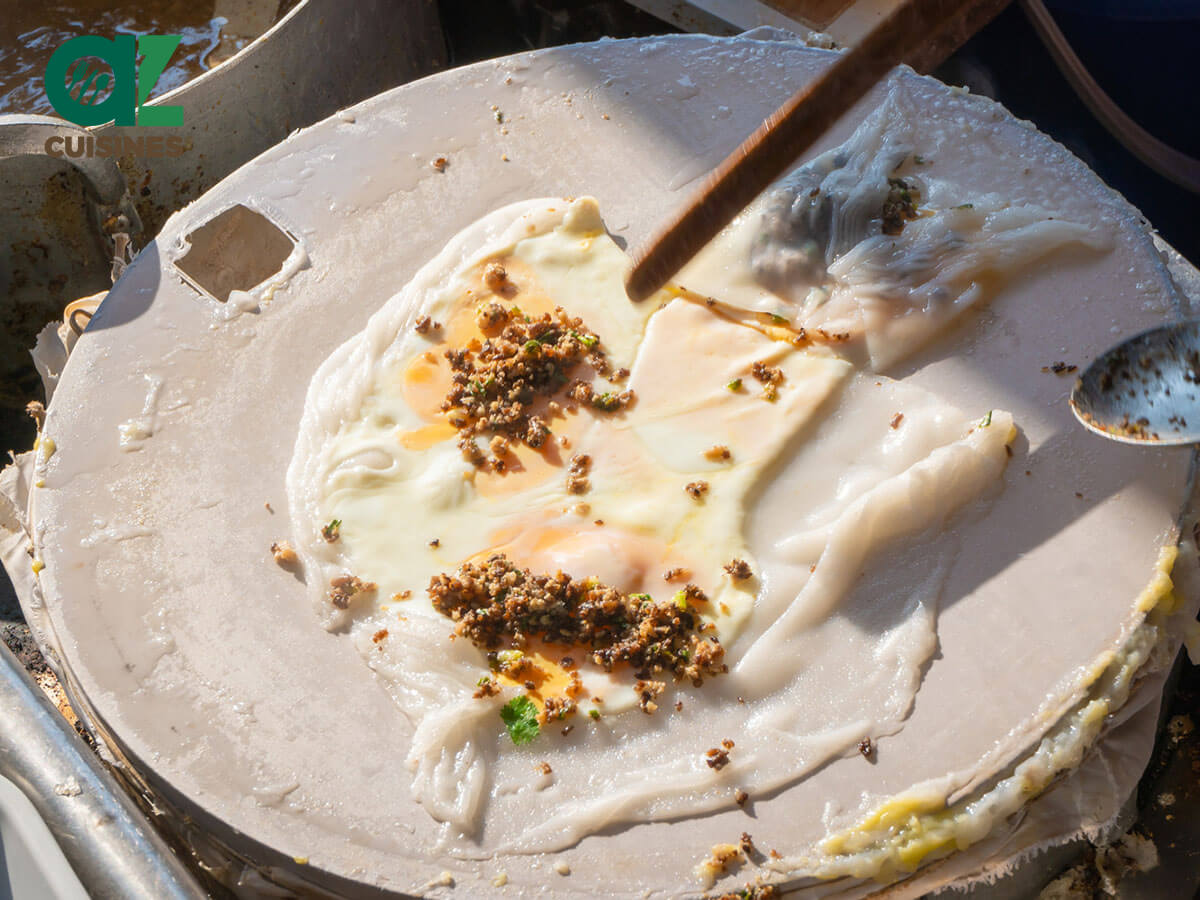
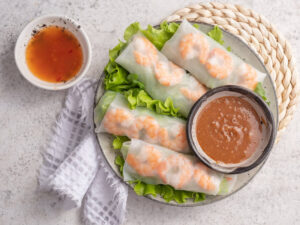

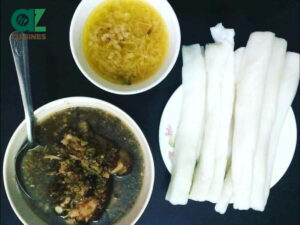
Truc Tran (Kris)
Senior Food Editor
Expertise
Home Cooking, Meal Planning, Recipe Development, Baking and Pastry, Food Editor, Cooking-video Maker, Vietnamese Food Evaluation Expert
Education
Truc Tran (Kris), an experienced food writer and editor, is great at exploring and describing global cuisines, from simple street food to fancy dining. In her writing, she skillfully mixes different flavors, cooking methods, and culinary traditions, showing the unique character of various cultures through their food and drinks. On azcuisines.com, Kris highlights her knowledge, especially in Asian cuisine and worldwide traditional dishes.